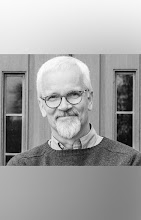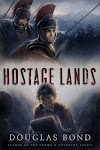 |
| More intent on the words than on the music |
THE HIGHEST USE OF POETRY--THE HYMN
In the course of my research and writing and teaching about hymns over the last couple of decades I have learned many wonderful things about hymns, hymn writers, and hymnody—and every time I open the hymnal (usually the Trinity) I learn something new! I love singing hymns. I love the very best of our hymn lyrics from the last seventeen hundred years or so, and I have come more and more to love them not only as heartfelt passionate expressions of praise to God but as the best of English poetry. It was American poet John Greenleaf Whittier who said, "The highest use of poetry is the hymn." In addition, I love many of the timeless musical settings of great classic hymn poetry, and I appreciate a growing number of the new hymns that are being written by thoughtful Christian poets and musicians. Because I love hymns and singing so much, I totally agree with what John Calvin observed about music, "Music has a secret and almost incredible power to move hearts.”
As I incorporated the study and imitation of the best poetry worthy to be studied in high school English classes, however, I discovered some significant obstacles to understanding and appreciating hymns as poetry for this generation of Christian young people. Nowhere is this more obvious than when students attempt to write about hymns as poetry. I have taught my students to explore the meaning of poetry by writing poetry explications, essays written specifically about poetry, wherein they observe and evaluate the effectiveness of the various poetic conventions used and the depth and richness of the meaning. I often have them compare secular (so called) poets with the poetry of hymns written at the same time or in similar circumstances. For example, I include Lutheran pastor Martin Rinkhart’s great lyric, Now Thank We All Our God, written while the Thirty-Years War was raging through Germany, in my course on World War I poets. Rinkhart’s 17th century hymn was sung August 1, 1914 on the streets of Berlin when the Kaiser announced the mobilization of German troops to invade Belgium. It makes a dramatic counterpoint to the despair and anger of many of the WW I poets.
STUDENT WRITERS PANIC
Here is where I discovered the problem for my students. When
I give them a poem of Wordsworth or Cowper or Shakespeare to analyze and
evaluate, they know what to do. It looks like and reads like poetry. It is in
the format in which the poet originally penned the words; the poetic medium is, in some real measure, the message. Hence, they can observe the
basic unit of poetry, the line, with its hard left margins and capitalized
first lines (center lining poetry is a Hallmark card reduction of meaning and
content to visual form and is unlike the format the poet wrote the poetry in).
They can find the parallel ideas, the progression of thought, the figures of
speech, the allusions, the meter, the rhyme scheme, the poet’s use of various
sound devices, the use of inclusio, and other subtleties of the poetic art. But
when I give them a hymn from the Trinity
Hymnal (I consider the Trinity to
be the very best of American hymnals and use it daily), they are frustrated and
confused. When I give them a hymn with the poetry embedded in and subordinated
to the musical score, as it appears in almost all American hymnals since the
mid-19th century, they panic.
 |
| Poetic form lost to and subsumed in the musical notation |
REVIVALISM TORPEDOES CONTENT
So I did some more research. As near as I can find, we began doing this as a direct result of the shift in priorities in 19th century revivalism. We began replacing many of the Psalm versifications from the Reformation, and many of the classic hymns with revival songs that in general were sentimental, repetitive, lacking in theological depth, and addressed largely to the sinner rather than as expressions of worship and adoration to God. This reduction of the content and the quality of lyric went hand in
 |
| Father of English Hymnody |
In Protestant Christian worship, music has always been in a subordinate role, supporting and aiding the worshiper in taking to heart and mind the meaning and richness of the poetic lyric. Though Calvin knew and appreciated the incredible power of music to move hearts, he cautioned against getting music and the objective meaning of the words flipped around, "We must beware lest our ears be more intent on the music than our minds on the spiritual meaning of the words.” But in Revivalism that’s precisely what happened, the words became less important. The new format of the hymnal reflects this shifting priority of revivalism. Charles Finney’s New Measures and Pelagian theology, flipped things around. The new format of the American hymnal, reducing the central importance of the poetry, was born. I would argue that this format does exactly what Calvin cautioned us against, our eye and ear “more intent on the music” (that’s the first thing we see in Revivalism-influenced hymnal format, musical score not poetic lines) “than our minds on the spiritual meaning of the words.”
Ask English students to write a timed essay under exam conditions about hymn poetry or offer them hymn poetry in its original poetic format, poetry stripped and dissected to fit the musical format, and they will choose every time to have it in poetic form. Imagine doing this with a prose paragraph, each line cut away from the next, with musical notation inserted and separating the flow of idea; the result would be confusion not comprehension, and the paragraph's meaning would be difficult to impossible to understand.
But some might object and say that when we are singing in church we are not writing an essay; they are two entirely different activities. Though that is true, both activities require the ones reading and singing the poetry to understand the meaning of what they are reading and singing. Christians rightly place a high premium on the engagement of the mind and of the imagination in worship. I would argue that singing hymns from a hymnal inadvertently formatted to make it more difficult to observe the subtleties of the poetry being sung is actually working against its own purpose.
RESCUE THE HYMNAL FROM REVIVALISM
Maybe it’s time to take on a remaining reductionist influence of Revivalism on our hymnal and thus on our worship. Why not consider a cross page format, the poetry in lines and stanzas on the left and facing the poetry the musical score with poetry embedded? For shorter hymns the poetry could appear on the top of the page and the musical score at the bottom. To reduce the obvious increase in
 |
| Format the hymnal to reflect the priority of lyric |
In this proposed format reconfiguration (not a new configuration, but a return to one that is consistent with how Reformed Christians have sung in worship since the Reformation itself—poetry and meaning first, music second) it will send a clear message to the worshiper that the meaning of the words, taken on the lips, in the heart, and understood in the mind, is of first importance in our worship. I guarantee that the majority of worshipers (especially our young children) will sing from the poetry (some studies indicate that only about 25-30% read music when singing in church anyway). They certainly will pray and meditate from the hymnal from the poetry where the progression of thought and rich poetic conventions are uninterrupted by the musical notation. I conclude with Calvin’s caution: "We must beware lest our ears be more intent on the music than our minds on the spiritual meaning of the words.” I urge publishers of hymnals to consider rescuing hymn poetry from the influence of Revivalism so that our hymnal format reflects biblical priority in sung worship.
Douglas Bond is author of a number of books for young people and adults, including his Mr Pipes series on Hymn writers, Augustus Toplady (EP, 2012), and The Poetic Wonder of Isaac Watts (RT, 2013). As a hymn writer, Bond collaborates with several composers, including Greg Wilbur; watch for the forthcoming New Reformation Hymns/Parish Psalms album, coming in 2017. Learn more at www.newreformationhymns.webs.com.





























